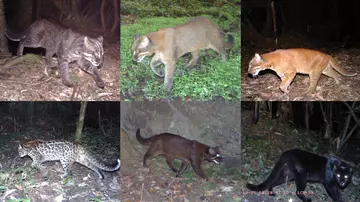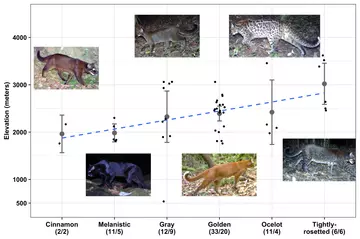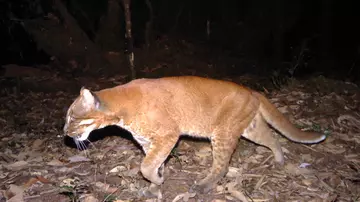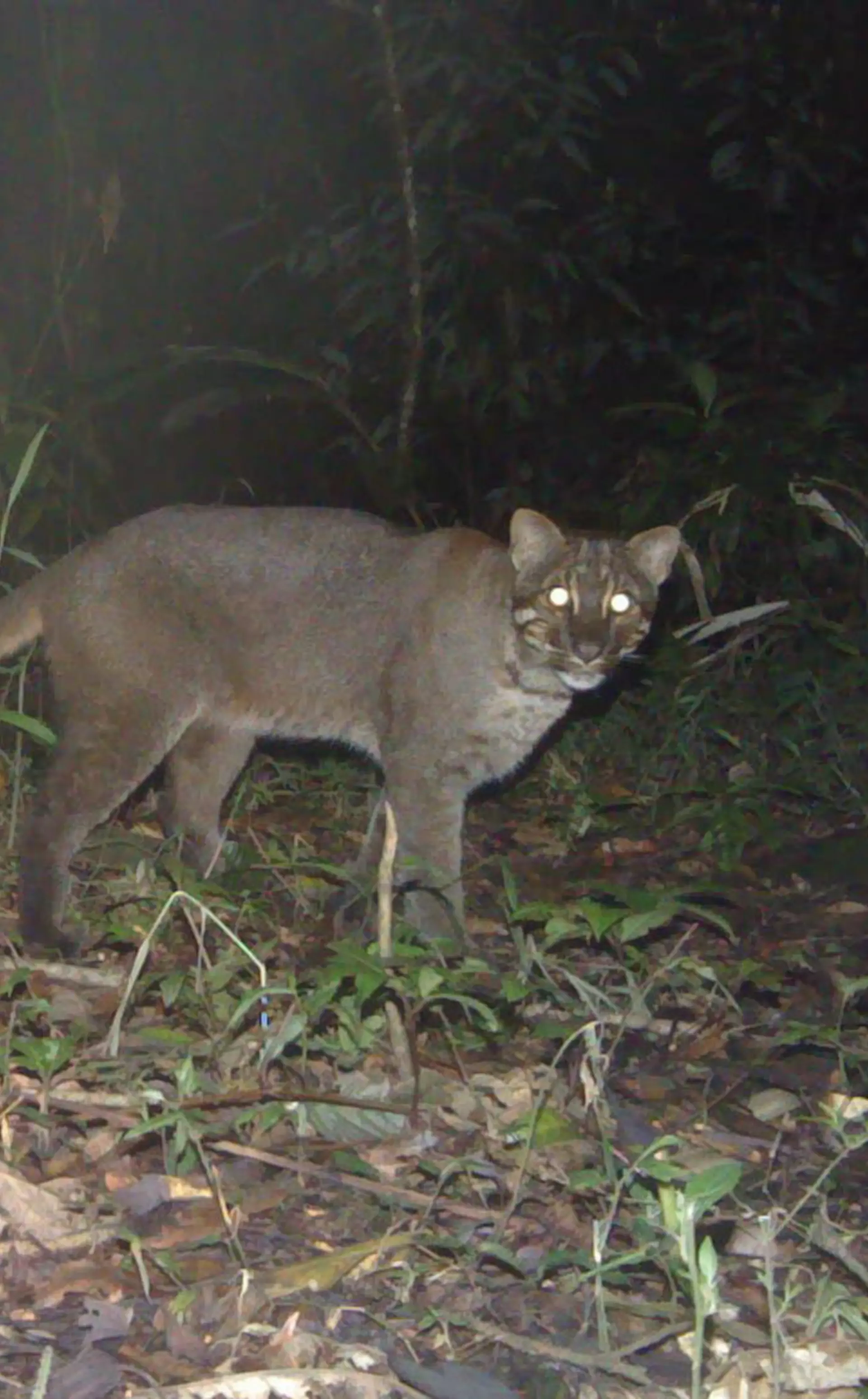
ZSL
Zoological Society of London
Six different ‘colour morphs’ of the Asiatic golden cat discovered in India’s Arunachal Pradesh
Six different colour morphs of the elusive Asiatic golden cat have been discovered in Northeast India – with the findings being hailed as "an evolutionary puzzle" – as the world’s greatest number of different coloured wild cat species in one area are reported.
The Indian scientists from ZSL and UCL discovered the colour morphs, during a wide-scale camera trapping study covering both community forests and protected areas across Dibang Valley, Northeast India.
The study, published on 7 June 2019 in the Ecological Society of America’s journal, Ecology aimed to uncover a greater understanding of human-wildlife interactions in the region but discovered a group of entirely different-looking animals on their camera traps – with an inkling they were all the exact same species.

The finding is said to spark more questions than it answers. However, understanding how this remarkable phenomenon takes hold in a population, may help scientists grasp how quickly species can adapt and evolve to changing environments. This would advise scientists of the resilience of the species to climate change or habitat degradation and destruction.
Colour morphs are not classed as different subspecies as they may live in the same area and even interbreed. However, if differences in their behaviour prevented them from interbreeding – this could represent the beginning of the evolutionary process into separate subspecies. A more well-known example of a colour morph is the melanistic (dark coloured) morph (aka black panther) of the common leopard (Panthera pardus).

Within the six colour morphs recorded, an entirely new colour morph was also found in one of the community-owned forests. The now named “tightly-rosetted” morph after the leopard-like rosettes tightly spaced on their gray coat, now sits alongside the already known: cinnamon, melanistic, gray, golden, and ocelot (due to its ocelot-like markings) types.
ZSL scientists believe that the wide variation displayed in the cat’s coats provides them with several ecological benefits. It enables them to occupy different habitats at different elevations – from wet tropical lowland forests to alpine scrubs – and provides camouflage while hunting different prey such as tropical pheasants or Himalayan pika (a small mountain-dwelling rabbit-like mammal).

Colour morphs are thought to arise from random genetic mutations and take hold in the population through natural selection. In this region, scientists suspect that the phenomenon is driven by competition with other big cats such as tigers (Panthera tigris) and clouded leopards (Neofelis nebulosa). Being melanistic in the misty mountains during nocturnal hunts, for example, may mean they are better concealed from their prey; making them more efficient predators.
Dr Sahil Nijhawan, the India-based lead author and British Academy Fellow at ZSL’s Institute of Zoology and UCL said: “According to evolutionary theory, if a colour morph is not beneficial for a species survival – over time, it should die out in the population. The fact that we have so many different colour morphs persisting in Dibang Valley shows there must be some ecological advantages to the variety of colours.
“We now know Dibang Valley hosts the world’s most diverse range of colour morphs of a wild cat species ever reported in one site, but we are only just starting to understand this rare ecological phenomenon. We need more studies that shed light on such unique adaptations and the benefits they provide to species, especially in a world where they must adapt quickly.”
FIND OUT MORE ABOUT OUR WORK ACROSS ASIA
Nijhawan, S., Mitapo, I., Pulu, J., Carbone, C., Rowcliffe, J. M. (2019) Does polymorphism make Asiatic golden cat the most adaptable predator in Eastern Himalayas? Ecology. https://esajournals.onlinelibrary.wiley.com/doi/10.1002/ecy.2768
